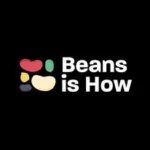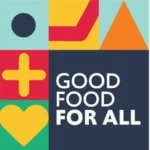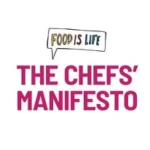On 18 October, World Vision, FAO, DSM, the European Union and the SDG2 Advocacy Hub held an official side event of the 46th Session of the Committee on World Food Security that identified priority actions through diverse voices to accelerate progress towards SDG2.
This side event offered unique insight through a diverse panel representing local farmers, EU, Government, Private Sector, NGO, UN and civil society groups. Led by a farmer’s field experience from Sub-Saharan Africa, participants explored best collaborative practices to advance integrated food and market systems approaches. This discussion focused on how to bring priority actions together in a way that looks at SDG 2 through a ‘new lens’ narrative that can serve to complement the current mission towards Zero Hunger, further supporting diverse stakeholders to collaborate constructively and develop impactful, long-term solutions.

Moderator: Rebecca Middleton, Executive Director Alliance to End Hunger
Panel:
• Elizabeth Gwevo, Farmer, Mudhindo Village, Zimbabwe. Participant in ENTERPRIZE Project
• Ali Said, Chief Technical Advisor, Livelihoods and Food Security Programme (LFSP), FAO Zimbabwe
• Katie Carson, Director Global Nutrition Policy & Government Relations, Royal DSM NV
• Juan Manuel Velasco, Senior Policy Officer, European Commission, DG DEVCO, International Cooperation and Development
• Paul Newnham, Director, SDG 2 Advocacy Hub
Programmes introduced:
Enterprise Project: In Zimbabwe, the Ensuring Nutrition, Transforming and Empowering Rural Farmers and Promoting Resilience (ENTERPRIZE) multi-stakeholder project (World Vision/FAO/Palladium) improved food and nutrition security of smallholder farmers through three inter-linked intermediary outcomes- increased agricultural productivity; income and consumption of diverse and nutritious food focusing on 11 crop and livestock value chains. The project promoted climate resilient farm enterprises, increase of production and consumption of diverse nutritious foods, and mobilised women to participate in savings groups. 12,922 farmers’ value of incremental sales in 2017 at household level went up by 200% for goats, 95% for poultry, 23% for groundnuts and 500% for sorghum in comparison over one year. ENTERPRIZE has made considerable efforts to improve implementation, coordination and integration. Future programme can learn from this experience to understand the enablers and blockers.
DSM Partnership: Innovations in food market systems using public private partnership between World Vision, DSM, Africa Improved Foods (AIF), Kumwe and Sight and Life in Rwanda. A season-long pilot during January-May 2018 leveraged World Vision’s ‘Building Secure Livelihoods’ model with Kumwe-AIF innovation targeting improved post-harvest efficiency where farmers sold maize on cob. 4426 farmers aggregated 3,000MT of high quality (90% acceptance rate vs 25% traditionally) maize and were linked to premium market. It combined agricultural science, market strategies, training for improved yield, delaying the shelling of maize to make it resilient to aflatoxin, creating jobs, sparing farmer’s time, and lifting families out of poverty. The 5-year scale-up vision WV Rwanda and AIF co-own entails maize-value chain transformation, targeting 196 cooperatives with 48,282 farmers aggregating 28,000MT maize.
FIRST Project: FIRST is a multi-stakeholder partnership (FAO+EU+governments) aimed at improving FSN through policy assistance. The EU, IFAD, IFPRI, Sight and Life, SUN Movement and WFP partnered to generate and analyse evidence priorities for action to accelerate progress towards SDG 2, which includes: i) Analyses – based on broad country-level consultations with different constituencies – of the effectiveness of food security and nutrition policies from 20 countries across six different regions; ii) Quantitative analysis of panel data from 116 countries; iii) extensive review of literature and key informant interviews. Based on the evidence and analysis preliminary findings of the priority actions to accelerate progress towards SDG 2 include: refocusing on agriculture; creating an enabling environment for private-sector investments; improving monitoring and evaluation; implementing actions for gender equality; strengthening sectors’ capacities to contribute to food security and nutrition; and strengthening institutional capacities at the sub-national level to contribute to food security and nutrition.
SDG2 Narrative Project: Given the issues and themes in SDG2 are very interlinked – for example, how nutrition policy is interdependent with biodiversity; and how food systems interact with agriculture – there is a desire among stakeholders to develop a communication narrative that sits above these issues. The SDG2 Advocacy Hub network has been looking at this new narrative approach through a global consultation. The narrative will serve as a framework for highlighting messaging over 2020 as well as work alongside partner’s own narratives, laying the foundation for the next decade of action on SDG2 and within the other broader SDGs. One of the aims of this project is to bring priority actions together in a way that looks at SDG 2 through a ‘new lens’ narrative that can serve to complement the current mission towards Zero Hunger, further supporting diverse stakeholders to collaborate constructively and develop impactful, long-term solutions.
Key Takeaways
 Investment: Addressing the four dimensions of food security and nutrition requires a significant increase in responsible investment in agriculture and food systems (Principles for Responsible Investments in Agriculture and Food Systems (CFSRAI)). In 2017, the CFS Committee embarked on a multi-stakeholder policy convergence process which will lead to the development of Voluntary Guidelines on Food Systems and Nutrition to be presented for endorsement at CFS47 in 2020. The guidelines are expected to counter the existing policy fragmentation between the food, agriculture and health sectors while also addressing livelihood and sustainability challenges and to contribute to making food systems nutrition-sensitive and promoting secure access to safe, diverse and high-quality diets for everyone.
Investment: Addressing the four dimensions of food security and nutrition requires a significant increase in responsible investment in agriculture and food systems (Principles for Responsible Investments in Agriculture and Food Systems (CFSRAI)). In 2017, the CFS Committee embarked on a multi-stakeholder policy convergence process which will lead to the development of Voluntary Guidelines on Food Systems and Nutrition to be presented for endorsement at CFS47 in 2020. The guidelines are expected to counter the existing policy fragmentation between the food, agriculture and health sectors while also addressing livelihood and sustainability challenges and to contribute to making food systems nutrition-sensitive and promoting secure access to safe, diverse and high-quality diets for everyone.
Trust: There is a strong need for trust, clear targets and partner role and responsibility clarification, potentially improving efficiency and alignment of expectations.
Innovation: It is crucial that each partner brings to the table an open mindset, a propensity for innovation, partnerships principles and shared goals. This sets a conducive environment for innovative solutions to be curated and developed collaboratively at the global and national level, that can then give the scope, support and inspiration required to co-create community level solutions, with local partners.
Integration: Nutrition sensitive, sustainable and productive agriculture integrated with market linkages hold the key to addressing the key causes of malnutrition in all its forms for the progressive realisation of the right to adequate food in the context of achievement of Sustainable Development Goal 2 as a whole.
Relationship to other SDGs:
– Eradicating poverty cannot be achieved without ensuring food and nutrition security for all. While SDG2 is a strong enabler for SDG1, increasing agricultural production, productivity and incomes require complementary policies that benefit the poor and vulnerable communities in rural areas and reduce their exposure to adverse environmental shocks.
– SMEs, along with smallholder farmers, make up the bulk of the food system in developing and emerging markets. They play a key role in this, as they occupy critical positions along the value chains: as input suppliers, off-takers, processors, distributors, which furthermore creates jobs and enhances regional economic growth. SDG8 in the agri-food space is key to enabling SDG2.

 We will be continuing to engage in these discussions in 2020 and would encourage your participation. For more information, contact the SDG2 Advocacy Hub Secretariat.
We will be continuing to engage in these discussions in 2020 and would encourage your participation. For more information, contact the SDG2 Advocacy Hub Secretariat.
RESOURCES









